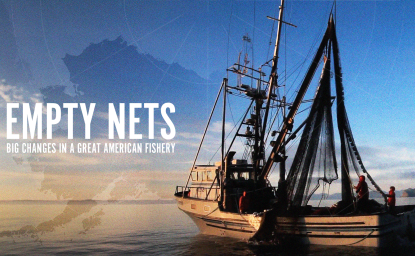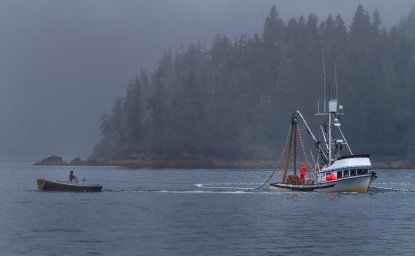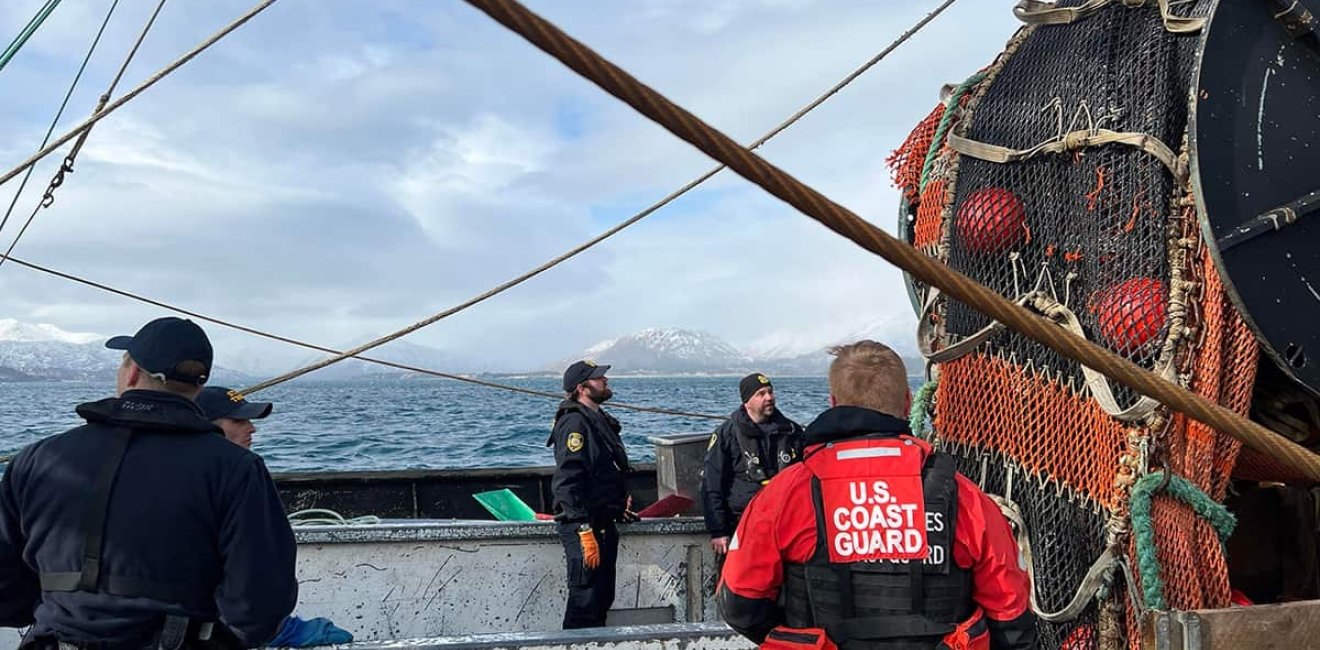
A blog of the Polar Institute
The 2024 Alaskan commercial salmon harvest was approximately 450 million pounds—the lowest harvest recorded since 1985. While warming ocean temperatures, and overfishing have often been blamed for Alaska’s recent fishing woes, the magnitude of these declines suggest that additional, more insidious factors may be at play. More frequently, fisheries experts are expanding their focus by examining the impacts of illegal, unreported, and unregulated (IUU) fishing activities and rising geopolitical tensions in the region.
Geopolitical competition in the Arctic has certainly complicated Alaskan fisheries management and tested US Arctic defense infrastructure. Notably, Russia and China have increased their presence in the region and its adjacent waters. Russia, with its expansive Arctic ambitions, and China, with its growing interest in the region’s resources, have raised U.S. national security alarms. US security forces remain hypervigilant of potential encroachments on the US Exclusive Economic Zone (EEZ) and illegal, unreported, and unregulated (IUU) fishing. Such behavior not only complicates regulatory enforcement but also puts additional pressure on vulnerable fish stocks.
The Shadow of Illegal, Unreported, and Unregulated Fishing
IUU fishing is a major concern for global fisheries, and its impacts are increasingly evident in Alaska. These illicit activities undermine legitimate fishing operations and strain already dwindling marine populations. IUU practices can lead to overfishing, ecosystem disruption, and loss of revenue for legal fishermen. Moreover, it often involves practices detrimental to the long-term sustainability of fish populations, such as the use of unregulated gear or fishing in protected areas.
Evidence suggests IUU fishing is not just a distant problem but a real and present threat. Reports indicate that illegal fishing vessels may be operating in Alaskan waters, exploiting gaps in monitoring and enforcement. These vessels often target particular species resulting in bycatch that contributes to a loss of chinook salmon. The lack of accurate data on these unreported catches means that the true scale of the problem is likely even greater than what is visible through official reports.
The US Coast Guard’s Arctic Program and Polar Security Cutters
In response to these growing threats, the US Coast Guard’s Arctic program and the deployment of Polar Security Cutters, have been integral to maintaining US sovereignty and safeguarding our resources. The Arctic’s increasing accessibility due to melting ice demands a stronger US presence to monitor and respond to various activities. The Coast Guard’s Arctic Strategy focuses on enhancing operational capabilities, improving infrastructure, and fostering international cooperation.
One of the program’s primary objectives is to ensure maritime safety and security in the Arctic. This includes conducting search and rescue operations, enforcing US laws and regulations, and responding to environmental emergencies. The program also emphasizes the importance of safe and free-flowing commerce throughout the Marine Transportation System (MTS),.
The Polar Security Cutters are a critical tool in the Coast Guard’s Arctic arsenal. These state-of-the-art icebreakers are designed to operate in the harsh conditions of the Arctic, providing the mobility and endurance needed to maintain a US presence in the region. The PSCs will be equipped with advanced technologies to navigate through ice-covered waters, conduct patrols, and support scientific missions.
The deployment of Polar Security Cutters enhances the Coast Guard’s ability to respond to emerging threats and opportunities in the Arctic. Their icebreaking capabilities are essential for ensuring safe navigation for commercial vessels, supporting resource extraction operations in support of scientific research, and facilitating the transportation of goods and personnel. Moreover, their presence acts as a deterrent to potential illegal activities, including IUU fishing.
Conclusion
The historically devastating 2024 Alaskan commercial fishing season underscores the urgent need for decisive action to address environmental and geopolitical threats. The combined pressures of IUU fishing and geopolitical competition present a formidable challenge, but they also offer an opportunity for renewed commitment to sustainable management and investments in our national defense.
The preparedness of the US Coast Guard’s Arctic program, with its Polar Security Cutters, is vital to securing the region’s resources and enforcing US laws. By prioritizing robust enforcement measures and strengthening our defense capabilities, we can defend US waters and help ensure the long-term health of Alaska’s fishing industry for generations to come.
- This is an opinion piece and does not reflect the position of the US Coast Guard.
Author


Polar Institute
Since its inception in 2017, the Polar Institute has become a premier forum for discussion and policy analysis of Arctic and Antarctic issues, and is known in Washington, DC and elsewhere as the Arctic Public Square. The Institute holistically studies the central policy issues facing these regions—with an emphasis on Arctic governance, climate change, economic development, scientific research, security, and Indigenous communities—and communicates trusted analysis to policymakers and other stakeholders. Read more

Explore More in Polar Points
Browse Polar Points
Empty Nets: Big Changes in a Great American Fishery

Empty Nets: Big Changes in a Great American Fishery

Greenland’s New Governing Coalition Signals Consensus



